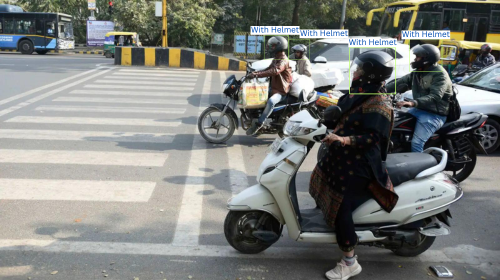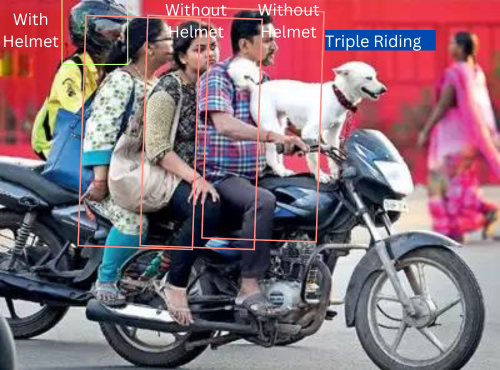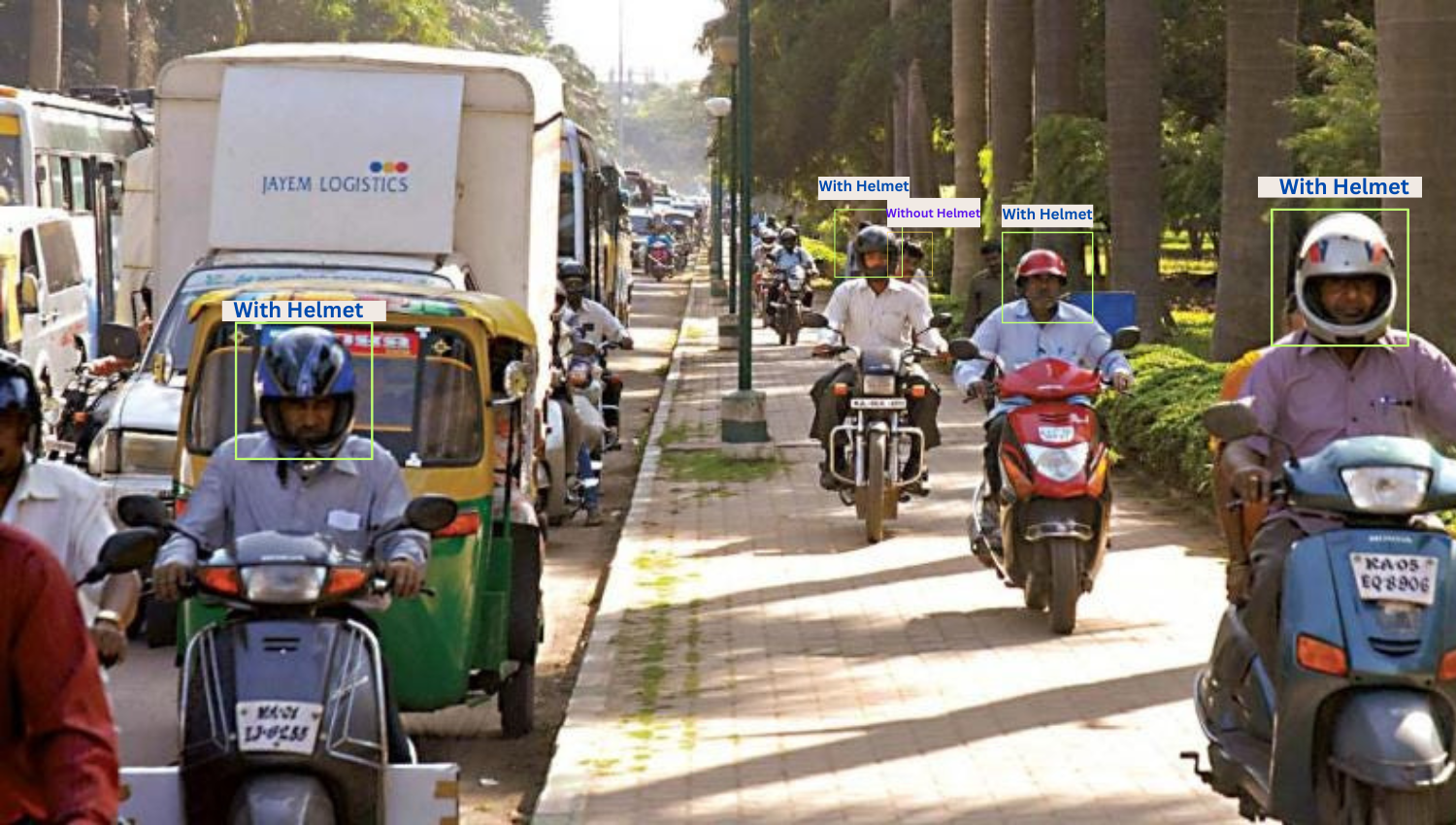Integrating Helmet and Triple Riding Detection into Smart City Infrastructure
In the pursuit of creating safer roads and reducing traffic fatalities, the integration of technology into urban infrastructure has become paramount. Smart city initiatives leverage various innovations to enhance efficiency, sustainability, and safety. Among these innovations, integrating helmet and triple riding detection systems into smart city infrastructure stands out as a promising solution to address road safety concerns.
This article delves into the significance of integrating helmet and triple riding detection technologies into smart city infrastructure, exploring their functionalities, benefits, challenges, and potential impact on road safety.
Table of Contents
Understanding the Need for Enhanced Road Safety
Road safety is a global concern, with millions of lives lost each year due to traffic accidents. In densely populated urban areas, the risk of accidents is amplified, posing significant challenges to city authorities and residents alike. Factors such as reckless driving, non-compliance with safety regulations, and inadequate enforcement contribute to the prevalence of road accidents.
Among the critical factors contributing to road fatalities are the lack of helmet usage by motorcyclists and the practice of triple riding on two-wheelers. Helmets play a vital role in reducing the severity of head injuries in the event of a crash, yet many riders neglect to wear them, exposing themselves to grave risks. Additionally, triple riding, where multiple passengers ride on a single motorcycle, further compromises safety and increases the likelihood of accidents.
To address these challenges, there is a pressing need for innovative solutions that leverage technology to promote safer road behaviors and prevent accidents. Integrating helmet and triple riding detection systems into smart city infrastructure emerges as a proactive approach to enhancing road safety.

The Role of Smart City Infrastructure in Road Safety
Smart city initiatives aim to leverage data, connectivity, and emerging technologies to improve the quality of life for urban residents. From intelligent transportation systems to advanced surveillance networks, smart city infrastructure encompasses a range of solutions designed to enhance efficiency, sustainability, and safety.
In the context of road safety, smart city infrastructure plays a pivotal role in monitoring traffic flow, enforcing regulations, and detecting potential risks. By integrating sensor networks, IoT devices, and data analytics, cities can gather real-time insights into road conditions, identify safety hazards, and implement targeted interventions to mitigate risks.
The integration of helmet and triple riding detection systems into smart city infrastructure aligns with the overarching goal of promoting safer road behaviors and reducing the incidence of accidents. These systems leverage advanced technologies such as computer vision, machine learning, and sensor fusion to detect violations in real time and alert authorities to take appropriate action.
Exploring Helmet Detection Technology
Helmet detection technology utilizes computer vision algorithms to identify motorcyclists and assess whether they are wearing helmets. The system relies on cameras installed at strategic locations, such as traffic intersections or key thoroughfares, to capture real-time footage of road users.
The system analyzes the captured footage through image processing and machine learning algorithms to detect motorcyclists and classify their helmet-wearing status. By distinguishing between helmeted and non-helmeted riders, the system can flag instances of non-compliance and generate alerts for enforcement agencies.
Key features of helmet detection technology include:
Real-time detection: The system can identify motorcyclists and analyze their helmet status in real time, enabling prompt intervention in cases of non-compliance.
Accuracy and reliability: Advanced algorithms ensure high accuracy in distinguishing between helmeted and non-helmeted riders, minimizing false positives and negatives.
Scalability: The technology is scalable and can be deployed across various locations within the city to cover a wide range of road networks.
Integration with existing infrastructure: Helmet detection systems can be seamlessly integrated with existing traffic management systems and surveillance networks, enhancing their functionality without significant infrastructure overhaul.

Benefits of Helmet Detection Technology:
Improved enforcement: By automating the detection process, authorities can efficiently enforce helmet-wearing regulations and deter non-compliance.
Increased awareness: Public awareness campaigns can be reinforced with real-time enforcement data, highlighting the importance of helmet usage and promoting safer riding habits.
Enhanced safety: By encouraging widespread helmet usage, the technology contributes to reducing the severity of head injuries in motorcycle accidents, ultimately saving lives.
Challenges and Considerations:
Privacy concerns: The deployment of surveillance cameras raises privacy considerations, necessitating transparent policies regarding data collection, storage, and usage.
Cost of implementation: While the long-term benefits of helmet detection technology are significant, initial implementation costs may pose challenges for cash-strapped municipalities.
Maintenance and reliability: Ensuring detection systems’ ongoing functionality and accuracy requires regular maintenance and calibration, posing operational challenges for city authorities.
Integrating Triple Riding Detection Technology:
In addition to promoting helmet usage, addressing the practice of triple riding on motorcycles is essential for enhancing road safety. Triple riding, where multiple passengers ride on a single motorcycle, is a common occurrence in many urban areas, posing serious risks to both riders and other road users.
Triple riding detection technology utilizes similar principles as helmet detection systems, leveraging computer vision and machine learning algorithms to identify instances of triple riding in real time. Cameras installed at strategic locations capture footage of motorcycles and analyze the number of passengers on each vehicle.
Key features of triple riding detection technology include:
Passenger counting: The system can accurately count the number of passengers on motorcycles, distinguishing between single, double, and triple riding configurations.
Object detection: Advanced algorithms enable the system to differentiate between riders and other objects, minimizing false positives.
Integration with enforcement mechanisms: Triple riding detection systems can be integrated with existing enforcement mechanisms to issue warnings or citations to violators.
Benefits of Triple Riding Detection Technology:
Risk mitigation: By identifying instances of triple riding, the technology helps mitigate the risks associated with overcrowded motorcycles, reducing the likelihood of accidents.
Enforcement Support: Authorities can use detection data to enforce regulations related to motorcycle passenger limits, promoting compliance and safer riding practices.
Behavioral change: Public awareness campaigns accompanied by enforcement measures can encourage riders to adhere to passenger limits, fostering a culture of safety on the roads.
Challenges and Considerations:
Technical complexity: Accurately detecting triple riding poses technical challenges due to variations in camera angles, lighting conditions, and occlusions.
Integration with existing infrastructure: Triple riding detection systems must be seamlessly integrated with other smart city initiatives and enforcement mechanisms to maximize their effectiveness.
Public acceptance: Overcoming resistance from the public, particularly among those accustomed to triple riding, may require targeted education and outreach efforts.
Impact on Road Safety and Beyond:
The integration of helmet and triple riding detection technologies into smart city infrastructure holds immense potential to enhance road safety and save lives. By leveraging real-time data and advanced analytics, cities can identify safety hazards, enforce regulations, and promote safer road behaviors among residents.
Beyond road safety, the adoption of these technologies contributes to the broader goals of smart city initiatives, including improved efficiency, sustainability, and quality of life. By investing in innovative solutions that prioritize safety, cities can create environments that are conducive to economic development, social cohesion, and overall well-being.
Conclusion:
Integrating helmet and triple riding detection technologies into smart city infrastructure represents a proactive approach to addressing road safety challenges in urban areas. By leveraging advanced technologies and data-driven insights, cities can promote safer road behaviors, reduce the incidence of accidents, and ultimately save lives.
While challenges such as privacy concerns, implementation costs, and technical complexities remain, the long-term benefits of these initiatives far outweigh the obstacles. Through collaborative efforts between government agencies, technology providers, and community stakeholders, cities can harness the power of innovation to create safer, more sustainable

